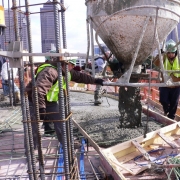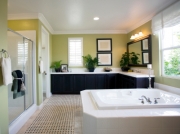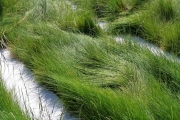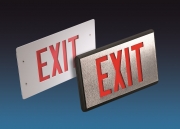How Do I Become a Contributing Writer?
If you have not previously written for Buildipedia and would like to become a contributing writer, submit a writing sample of a published article (a link to your article will suffice) and any supplementary information (resume, website link, etc.) that you would like to have considered. Submissions should be emailed to editorial@buildipedia.com. Once your submission has been reviewed, a member of our editorial team will let you know if there is an available story assignment that fits your area of interest.
Pitch Original Content
You may also pitch an original story idea of your own. Send an email to editorial@buildipedia.com and include the following, at a minimum:
- Proposed scope
- Sources you plan on reaching out to (if applicable)
- Article type
You will be contacted by a member of the editorial team to discuss your proposed article and answer any questions you may have. If we approve the assignment, we will email you a blanket independent contractor/contributing writer's agreement.
Buildipedia’s mission is to provide the most useful and relevant information about all aspects of the built environment to our audience, which comprises both AEC professionals and consumers. Our writers are professional journalists, bloggers, and AEC industry insiders – if this describes you, we welcome queries and submissions. Please find below a few key points about the types of content we publish and how to get your content onto Buildipedia.
All content is subject to editorial approval.
The articles that appear on all channels except the KnowledgeBase are the work of our team of talented journalists, bloggers, and AEC professionals. Learn more about this process under the Article Types tab.
The KnowledgeBase contains content produced by manufacturers, vendors, service providers, PR representatives, and other commercial interests. This includes white papers, industry reports, product reviews, press releases, and multimedia presentations. Although our team of writers does not produce this content, we feel that all of the information in the KnowledgeBase is of value to our audience in providing solutions, answers, and the right product or service for the project. Learn more about this process under the Guest Posts tab.
Buildipedia wishes to maintain the greatest possible transparency about how content comes to us, whether through advertising/public relations channels or through editorial channels. We follow the guidelines developed by the ASME to that end.
Links within articles (except those in the KnowledgeBase) are inserted at the discretion of the Editorial Department and arise from the research and editorial processes. Buildipedia does not accept requests or remuneration to insert links.
We prefer not to republish articles that were published previously, but when we do they will be marked as such and link back to the originating site.
Industry Reports and Guest Posts
At Buildipedia, we welcome reports, guest posts, and articles written by our advertising partners in the AEC industry. We think that this content has a value to members of our audience who are seeking solutions, answers, and information on the built environment. If you're a vendor, product manufacturer, AEC service provider, or PR rep who would like to see your content published on Buildipedia, consider adding your updates, photos, and news to our Knowledgebase.
Buildipedia will publish your content (white papers, product-specific reference materials, or multi-media presentations) in its Knowledgebase in the appropriate MasterFormat division, clearly labeled as "Advertising," with the full support of our layout design team. This post will include an author bio with a link to your website. This costs $250.
Additional placements in the Knowledgebase include the following options:
Buildipedia will feature an image of your choosing, clearly labeled as "Advertising," in the Rotator on the Knowledgebase landing page for 2 weeks following the publication of your content as described above. This costs $500.
Buildipedia offers to our Knowledgebase partners a discounted rate on display advertising: with the publication of your guest post, you will get a display ad (300 x 250) and 25% of the impressions on the Buildipedia page of your choice – work with us for placements across our site.
2013 Editorial Calendar
| January | February | March |
|---|
| IBS | De-Construction | Wind Power |
| Construction Outlook | Life Cycle Analysis | Landscape Architecture |
| Modular Homes | Cob, Adobe, Earth Houses | Urban Planning |
| Home Security & Safety | Winter Home Maintenance | Tax Rebates, Exemptions, etc. |
| How to Recycle Everything | Multigenerational Design | Spring Maintenance and Preperation |
| Home Gym | Tips for Winter Apartment Living | Rain Barrels and Rain Gardens |
April | May | June |
| Emerging Green Technologies | Pritzker Prize | Hospitality Operations |
| FoM Municipal Pools, etc. | Continuing Education | Heavy Equipment |
| Commercial MEP | Project Management | Emerging Architects |
| Residential Solar Power | Pritzker Residential Builds | Remodeling |
| Basements, Flooding, etc. | Natural Pest Control | Driveways and Pavement |
| Curb Appeal | Moving Tips & Renter’s Rights | Storm Readiness and Repair |
July | August | September |
| Climate Change | Adaptive Reuse | Solar Decathlon |
| FoM of Leisure Facilities | Historic Preservation | AEC Emerging Careers |
| Carbon Credits | AEC Billings Indices | Colleges and Universities |
| Kid-Friendly Backyards | Homesteading | Residential Reuse | Walls, Windows, Doors |
| Residential Irrigation | Guide to Tools and Maintenance | Painting Exteriors |
| Guide to Home Cooling | Outbuilding | Organization & Storage |
October | November | December |
| Museums | AEC Legislative Concerns | 2013’s Best ArchiMoments |
| Building Envelopes | GreenBuild | FoM of Malls |
| Energy Management | LEED | Healthy Buildings |
| Painting Interiors | Holidays at Home | Guest Rooms |
| Plumbing | Kitchens | DIY Projects for Winter |
| Whole Year Guide to When | Green Products & Materials | House of the Year |
Posts from CSI Members
Buildipedia invites CSI members to continue their mission of authoring and communicating building information by becoming our content partner. We value your expertise and your unique ability to educate, support, and assist the construction industry. We want to put your reports, blogs, and stories in front of our audience who are seeking solutions, answers, and information on the built environment.
Simple. Becoming a content partner with Buildipedia is easy. Contact us at jennifer.randle@buildipedia.com to get started. Put "CSI Content Partner" in the subject line.
Beneficial to you. Your company or firm will benefit from the promotion that publication on Buildipedia brings – a link to your site will increase traffic. We also offer a discount rate on display ads to CSI members. Contact us at steven.santino@buildipedia.com to learn more.
Beneficial to CSI. Buildipedia and CSI share a mission: to advance building knowledge. Communicating via Buildipedia could be an effective tool for CSI in its continuing efforts to differentiate its value to the construction industry as a whole.
Beneficial to us. We benefit by having informative, engaging content written by industry pros on our site, a tremendous value to our audience.










